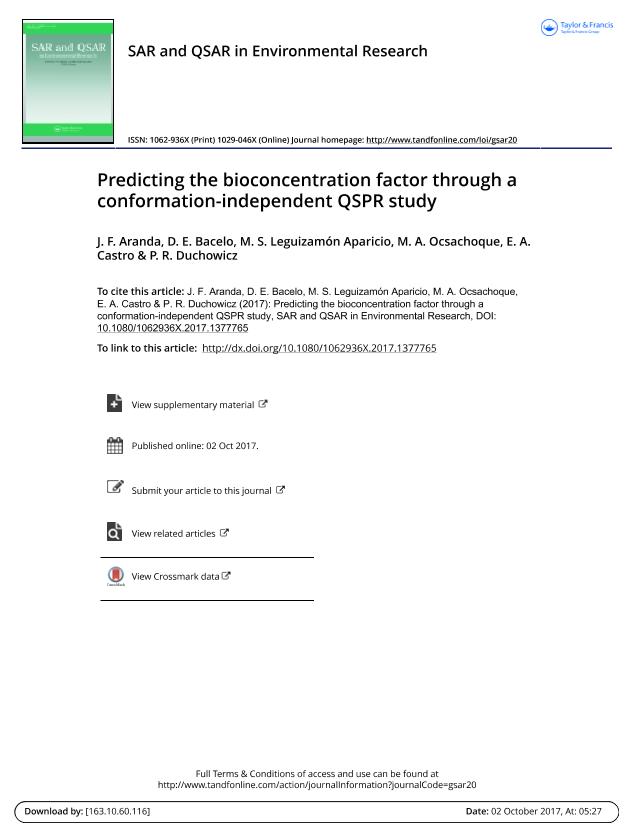Artículo
Predicting the bioconcentration factor through a conformation-independent QSPR study
Aranda, José Francisco ; Bacelo, Daniel Enrique
; Bacelo, Daniel Enrique ; Leguizamón Aparicio, María Silvia del Valle
; Leguizamón Aparicio, María Silvia del Valle ; Ocsachoque, Marco Antonio
; Ocsachoque, Marco Antonio ; Castro, Eduardo Alberto
; Castro, Eduardo Alberto ; Duchowicz, Pablo Román
; Duchowicz, Pablo Román
 ; Bacelo, Daniel Enrique
; Bacelo, Daniel Enrique ; Leguizamón Aparicio, María Silvia del Valle
; Leguizamón Aparicio, María Silvia del Valle ; Ocsachoque, Marco Antonio
; Ocsachoque, Marco Antonio ; Castro, Eduardo Alberto
; Castro, Eduardo Alberto ; Duchowicz, Pablo Román
; Duchowicz, Pablo Román
Fecha de publicación:
09/2017
Editorial:
Taylor & Francis Ltd
Revista:
Sar And Qsar In Environmental Research
ISSN:
1062-936X
Idioma:
Inglés
Tipo de recurso:
Artículo publicado
Clasificación temática:
Resumen
The ANTARES dataset is a large collection of known and verified experimental bioconcentrationfactor data, involving 851 highly heterogeneous compounds from which 159 of them arepesticides. In this Special Issue devoted to "Computational Toxicology and Fate of Pesticides?,we predict the Bioconcentration Factor of the ANTARES dataset by means of a conformationindependentQSPR approach. A large number of 27,017 molecular descriptors are explored, withthe main intention of capturing the most relevant structural characteristics affecting the studiedproperty. The structural descriptors are derived with different freewares, such as PaDEL, EpiSuite, CORAL, Mold2, RECON and QuBiLs-MAS, and so it is interesting to find out the way thatthe different descriptor softwares complement each other in order to improve the statistical qualityof the established QSPR. The best multivariable linear regression models are found with theReplacement Method variable subset selection technique. The proposed QSPR model improvesprevious reported models of the bioconcentration factor in the present dataset.
Archivos asociados
Licencia
Identificadores
Colecciones
Articulos(CINDECA)
Articulos de CENTRO DE INV EN CS.APLICADAS "DR.JORGE J.RONCO"
Articulos de CENTRO DE INV EN CS.APLICADAS "DR.JORGE J.RONCO"
Citación
Aranda, José Francisco; Bacelo, Daniel Enrique; Leguizamón Aparicio, María Silvia del Valle; Ocsachoque, Marco Antonio; Castro, Eduardo Alberto; et al.; Predicting the bioconcentration factor through a conformation-independent QSPR study; Taylor & Francis Ltd; Sar And Qsar In Environmental Research; 28; 9-2017; 749-763
Compartir
Altmétricas



